Xbox goes for lock-in with All Access
What console generation war? (Plus more besides!)
[Hi, I’m ‘how people find your game’ expert Simon Carless, and you’re reading the Game Discoverability Now! newsletter, a regular look at how people discover and buy video games in the 2020s.]
Welcome to the latest mishmash of, well, all kinds of interesting game platform and discoverability news for you, dear subscriber. And we’ll start out with some notes on the news of the week, Xbox’s continued next-gen rollout.
Is your Xbox your new set-top box?
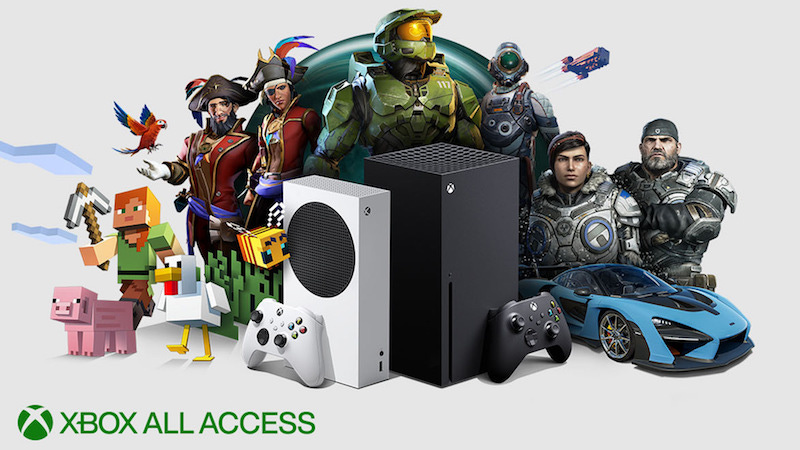
Just realized that even the phrase ‘set-top box’ dates me horribly, since it means ‘a cable/satellite device that you place on top of your television’. You know, from when you could actually fit things on top of CRT televisions.
But anyhow, as Kyle Orland’s handy ‘explainer’ article for Ars Technica notes, regarding the new console announces timed for November 10th that you probably noticed: “Microsoft is also talking up a smartphone-style program that lets players get either system for no money upfront as part of a subscription plan called Xbox All Access.”
Why is this a big deal? Take it away, Kyle: “With Xbox All Access, you make a two-year commitment to pay $24.99/month (for the Xbox Series S) or $34.99/month (for the Xbox Series X). In exchange for that commitment, you get the relevant hardware upfront, to keep, as well as a two-year subscription to Xbox Game Pass Ultimate.
Game Pass Ultimate usually costs $14.99/month, so your All Access monthly payments end up a bit higher to make up for that "free" upfront hardware. But in addition to not having to spend hundreds of dollars in one lump sum, All Access subscribers can actually come out ahead at the end of two years.”
So the Game Pass service and the (Xbox) hardware are being bundled in a similar way to subscribing to a hardware-bundled cellphone plan, or a cable TV plan. And that’s interesting, because it’s a fundamentally different way to approach the video game console which commits people to regular payments - much more of a ‘lock-in’.
Historically, the sell - which Sony is still pushing with games like Ratchet & Clank: Rift Apart for PS5 - is that your next console upgrade allows things never seen before with video game consoles. Ratchet & Clank is billed as “a game that wouldn’t be possible without the power of PlayStation 5.”
But Microsoft - also the hardware installed-base underdog, so with more room to play - thinks differentiating new platforms on better-looking and playing experiences is getting trickier, as the hardware gains get incremental. I agree.
Sure, early adopters are important. But some people want to play in 4K, and some people… don’t care. So just make the game playable across all platforms (including multiple Xboxes, PC and xCloud, ideally!) and players can decide what hardware they want to run it on themselves.
Of course, this does mean you get headlines from the enthusiast press like the following:
Yes, that’s a bit of a nightmare. But if you’re like me - I can barely remember which iPhone model I have, just that I own one - it’s probably fine. And this explains why Microsoft isn’t planning any Xbox Series S/X exclusives. That’s simply not the model any more. Heck, you don’t get iPhone 11-exclusive apps that don’t work on iPhone 10. You have a recent Xbox device and you can play Xbox games. That’s it.
Does this take a lot of the charm of a next-generation launch away? Absolutely. But does it stop user-base splintering between generations and reduce generational compatibility issues? Also, yes.
And ultimately, the Game Pass subscription plan (software as a service) is the ‘center of the offering’ for Microsoft, not a piece of hardware. This is incredibly relevant for game discoverability, since it shifts the lens from an ‘evaluate and buy’ to a ‘subscribe and try’ mode. So all eyes should be on this as it continues to roll out.
I could go on for a while, but wanted to point out Alex Hern’s excellent recent newsletter about Xbox’s strategy, which has more insight. Alex ends with some similar misgivings to me about Xbox’s potential roll-up of the game biz into a neat, game subscription-shaped package. Even one that I personally enjoy using.
You want sales data? Here’s some sales data!
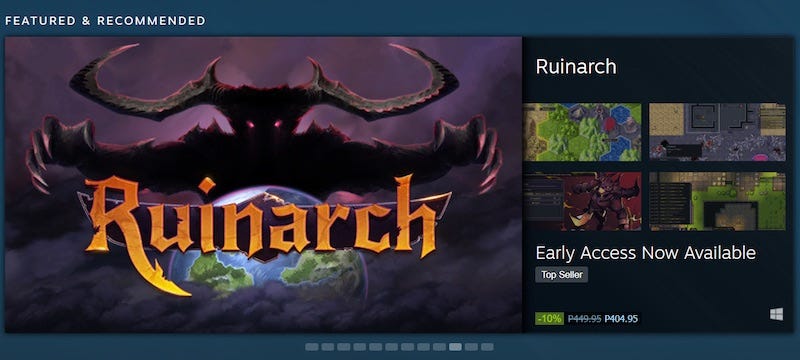
So I know some of you like the console analysis, but I know many of you are here for the numbers. Where are the numbers?! Well, here’s some numbers:
Ruinarch - great Early Access launch!
Ryan Sumo from Squeaky Wheel is wonderfully transparent - see the case study he did with me for Academia: School Simulator. And so it’s no surprise he just released data on the launch of Ruinarch, the Rimworld-ish emergent storytelling game he’s just published.
In the first week in Early Access on Steam, the game sold nearly 14,000 units, giving the title a first-week sales to wishlist ratio of 0.49, which is very good, especially for an EA title. Graph appended below, for the nosy who want to see tail in the first 7 days:

Oh, and bonus data: “On week two [Ruinarch] sold 1518 units, which is around 11% of week one sales. I’m not sure if there’s a lot of data comparing week 1 to week 2 sales but I’d love to see them.” Which reminds me, I need to do that week 1 / month 1 / year 1 Steam survey soon!
Furi and four years of sales
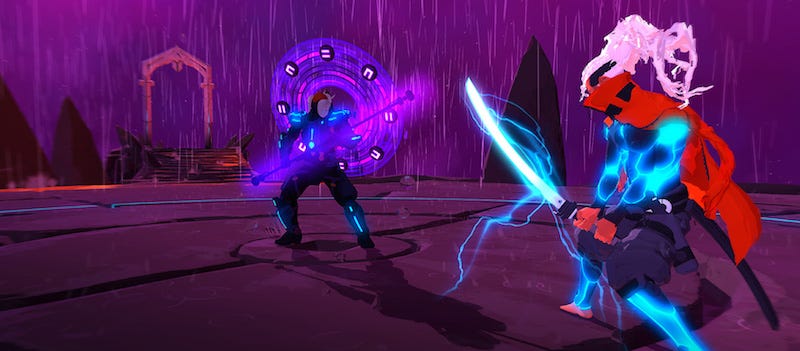
Over on The Game Bakers’ blog, Mylène Lourdel was kind enough to share some stats about Furi as part of a community week for the game. Furi, which is an intriguing action-heavy top down ‘boss rush game’, “launched as PlayStation Plus free game of the month and on Steam in July 2016, released on Xbox later in 2016 and on Switch in 2018.”
The game had a pretty unique launch because of PS+: “Furi’s first month was at the same time spectacular with over 2.8 million downloads on Playstation and very scary with only 17 000 sales on Steam… Did the free downloads cannibalize the sales? Or did it compensate with the extra visibility? We will never know. But what surprised us with Furi, and what we happily discovered after a few months, is that it never stopped selling!”
Sounds like the game has 273,000 outstanding Steam wishlists and has sold over 700k copies, about 40% of those on Steam - which is very impressive indeed. It benefited from being on Switch early (and on Steam ahead of the glut of current titles), but I also think its genre/style uniqueness helped it stand out. Congrats to all involved.
Lovers In A Dangerous Spacetime… loveliness.
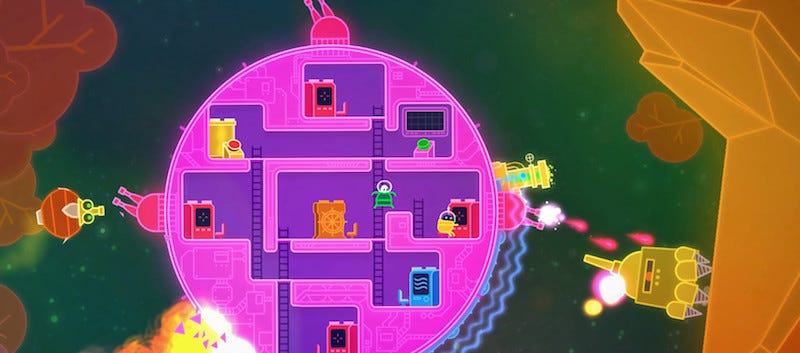
Another veteran title, with oddly similar resonance to Fury, is local co-op ‘you’re in a spaceship together doing cool stuff’ game Lovers In A Dangerous Spacetime, and Adam Winkels has written a good blog about its 5-year sales journey on Gamasutra.
Here’s the top-line: “Lovers had an okay-but-not-great launch, and we expected the game would fizzle out fairly quickly, but in fact sales ended up increasing for a few years, and it ended up being quite successful, thanks in part to updates, ports, discounts, word-of-mouth, and of course luck (don't want to pretend that there isn't a TON of random chance affecting how games fare).”
And here’s the last of several ‘explainer’ graphs about how the game’s revenue spiked around various sales and launches:
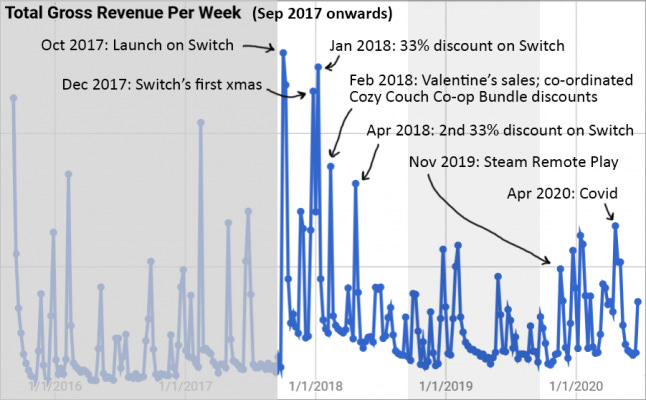
Again, there’s definitely an argument that some of the upside around 5 year-old games is, uh, ‘launching 5 years ago’. (Lovers was another early conversion to Switch before the platform got flooded, for example.)
But the point stands - if your game has staying power, you’re making 4-5x your first week’s Steam revenue in the first year. And discounting and launching on extra platforms can boost revenue surprisingly in the out years.
So it’s just not ‘first week flops, and it’s over’. But you also need to structure your finances so you can deal with the revenue slow-burn (PS - don’t make a local-only co-op game in 2020. Really.)
A Note On Game Creators & Giving
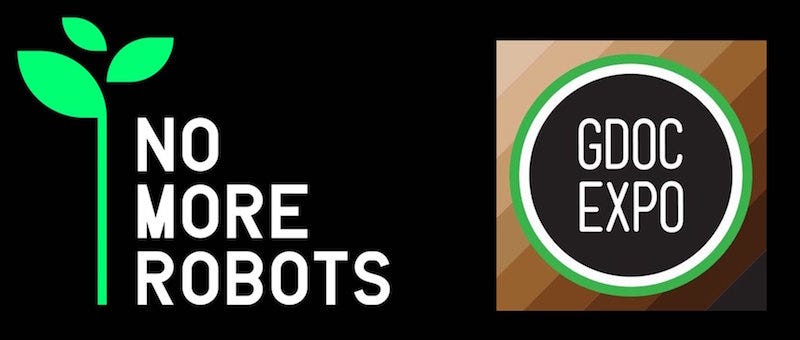
Ending out this newsletter, just wanted to add a section on game creators and giving/social responsibility, since it’s been on my mind. We’ve seen some pretty amazing gestures in recent times - Klei donating $1 million to the ACLU and NAACP legal defense fund, for example. (!)
Things like this - and Callum Underwood working with Pixelles to set up an unrestricted prototype grant for under-represented devs in Canada alongside Kowloon Nights and Superhot Presents (and now even more people, including Clever Endeavour Games & David Galindo) - have really been inspiring me recently.
So myself, Mike Rose & the team at No More Robots (whom I advise) teamed up with the Game Devs Of Color Expo to give out 5 x $15,000 grants - for either small games or prototypes, whatever the dev wants to use the money for, no restrictions. These will be given out this coming weekend at the virtual event, which you should very much attend.
The point of this isn’t to say ‘oh, we’re great’, or to say you should donate to one particular cause in one particular way. You might be inspired by issues like global warming or homelessness, rather than the above, for example. And it doesn’t have to be grants. (Although I happen to think straight money grants are under-appreciated.)
Ultimately, we all have power here, both in terms of money and influence. And I think all of us should be thinking about using our business in meaningful and non-symbolic ways to help others, no matter how big or small. (Kudos if you already did.)
The era of ‘forget about the outside world, listen to the shareholders’ is over. And while we all work on it, I’ll try to find opportunities to put in front of all of you, while highlighting existing good examples out there.



It is bizzare how consistent the first week/first year formula is. I thought games would vary wildly in terms of qualities that can't be communicated before the release. And when people actually play the games they would have a different experience from when they look at the trailers, which should result in unpredictable sales. Why isn't this the case?
At least there should be games that are pretty lousy but very well marketed and highly anticipated. Do people just not care beyond a certain point of popularity that the game sucks?